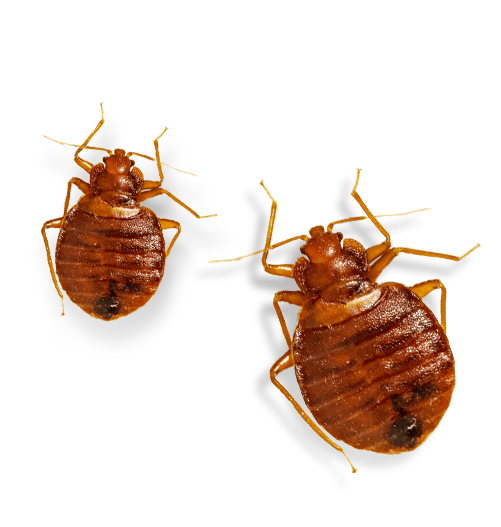Reliable Bed Bug Exterminator: DC Solutions with Heat Treatment
Wiki Article
Exploring the Scientific Research Behind Bed Bug Warm Treatments as a Lasting Pest Administration Strategy
In the realm of parasite management, the mission for efficient and lasting remedies remains a continuous search. One such method that has gained traction in recent times is using heat treatments to battle bed insect problems. By utilizing the science behind thermal death points for these consistent parasites, heat treatments use a promising option to typical chemical-based approaches. The ins and outs of just how warmth efficiently gets rid of bed pests and the broader implications for sustainable bug monitoring practices make this a topic worth checking out additionally.Bed Bug Heat Treatment Process

Thermal Death Factor for Bed Bugs
Revealing bed bugs to raised temperatures past their thermal tolerance variety is essential for attaining effective eradication in warm treatment processes. The thermal fatality point for bed insects describes the temperature at which these bugs can not endure. Study indicates that bed insects begin to perish when subjected to temperature levels above 113 ° F(45 ° C) for a continual duration. As the temperature boosts, so does the death rate of bed insects. At around 118 ° F(48 ° C ), bed pests begin to die quickly, with a death rate of almost 99% within mins of direct exposure. This demonstrates the sensitivity of bed insects to high temperature levels and highlights the effectiveness of warm therapies in eradicating invasions. By getting to and keeping temperature levels above the thermal death point for bed insects, parasite management professionals can make sure thorough removal of bed bug populations, including hard-to-reach areas where chemical therapies might be much less reliable. Understanding the thermal death factor for bed bugs is essential for carrying out effective warm treatment approaches and achieving lasting pest monitoring end results.Advantages of Warmth Treatments
Having actually developed the important thermal death point for bed pests, it is important to now explore the considerable advantages that warmth treatments offer in properly eliminating these durable parasites. One of the primary advantages is that warmth can pass through deep into holes and cracks where bed insects conceal, making certain that even the most hard-to-reach areas are heated to dangerous temperature levels.Additionally, warm therapies are safe and eco friendly, making them a sustainable bug monitoring approach. Unlike chemical pesticides, heat treatments do not leave hazardous residues that can present dangers to human wellness or the environment. This facet is specifically vital in delicate settings such as hospitals, schools, and houses where chemical use may not be preferable.
In addition, warmth therapies have a high success price in getting rid of bed insect invasions in a single treatment, reducing the need for multiple visits and minimizing disturbance to owners. This performance not just saves money and time but additionally supplies tranquility of mind to those handling bed bug problems.
Performance of Warmth Treatment

Heat treatments have the added advantage of killing bed bug eggs, which are typically this website immune to typical chemical therapies. Overall, the effectiveness of warm treatments in removing bed insect problems makes them a sustainable and reliable insect administration technique.
Sustainable Insect Administration Perks
Carrying out sustainable pest management techniques uses long-lasting benefits for both the environment and public wellness. By making use click of methods such as warmth therapies for insect control, we can reduce the dependence on dangerous chemical pesticides that can have negative effects on communities and human wellness - bed bug treatment. Lasting insect monitoring methods help in maintaining biodiversity by targeting certain pests without damaging non-target organisms, therefore preserving a balanced environment
Additionally, lasting insect monitoring methods add to the general wellness and wellness of the general public. By reducing direct exposure to harmful chemicals made use of in traditional parasite control techniques, warmth treatments supply a more secure alternative for bug management in property, business, and public spaces. This decrease in chemical use also assists in protecting against pesticide deposits from infecting air, water, and soil, guarding environmental top quality.
Final Thought
Finally, bed bug warm treatments have been shown to be a reliable and sustainable bug management technique. The thermal death factor for bed pests makes them susceptible to heat treatments, which have many benefits over typical chemical treatments. The effectiveness of heat treatments in getting rid of bed insect problems while decreasing environmental impact highlights the potential of this method as a sustainable service for insect control.The bed insect warm therapy procedure includes increasing the temperature level within plagued locations to a level that successfully gets rid of bed insects and their eggs. By reaching and preserving temperatures above the thermal death point for bed pests, parasite monitoring specialists can make certain thorough removal of bed pest populaces, including hard-to-reach areas where chemical treatments might be much less efficient. One of the main advantages is that heat can penetrate deep right into gaps and cracks where bed pests conceal, making sure that even the most hard-to-reach areas are warmed to dangerous temperatures. Unlike chemical treatments that may leave behind immune populaces, see this warm treatments supply a safe and ecologically pleasant service that can pass through deep into furnishings, wall surfaces, and other hard-to-reach areas where bed pests hide.
The thermal death factor for bed pests makes them vulnerable to warmth treatments, which have many benefits over conventional chemical therapies.
Report this wiki page